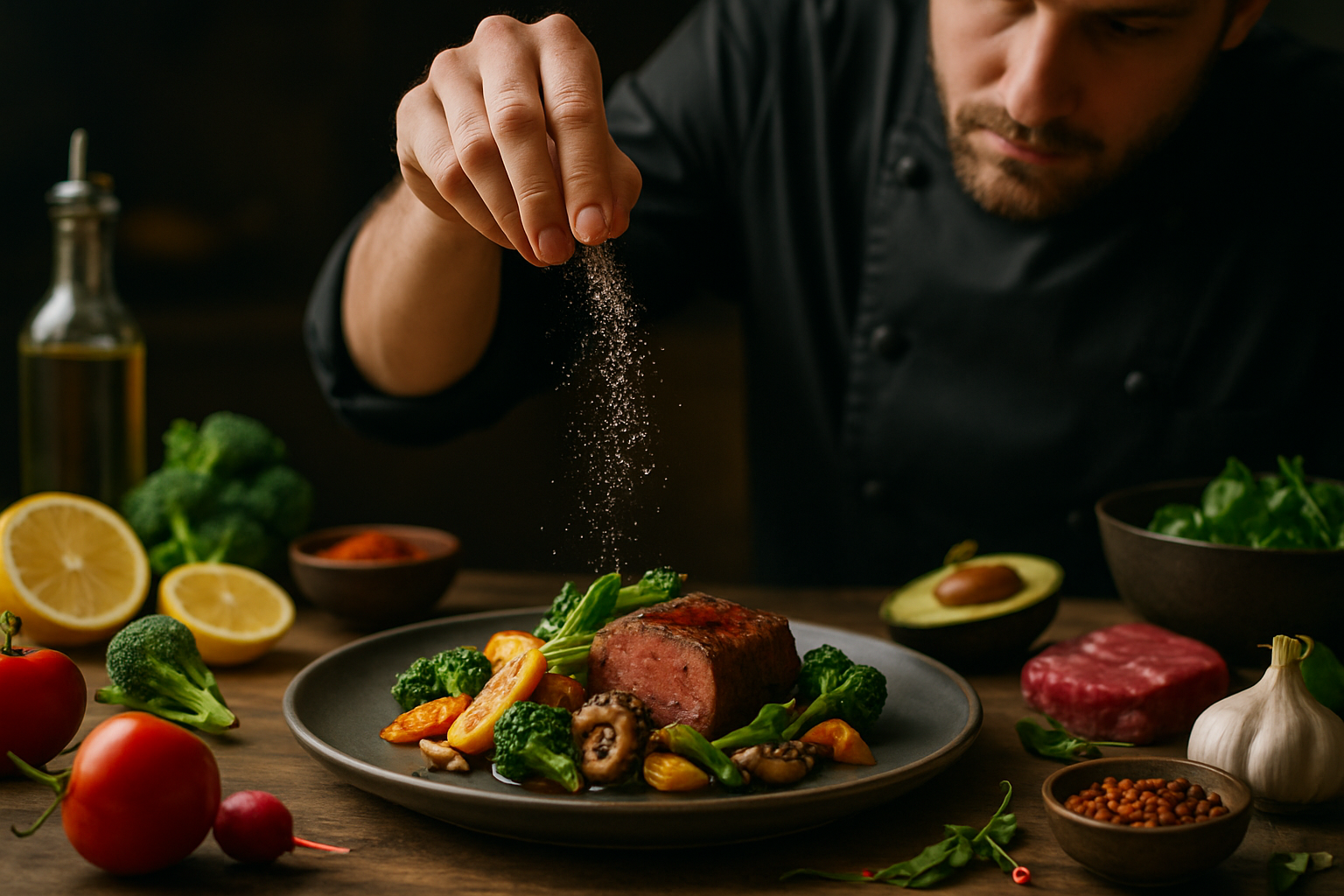Umami Revolution: Elevating Everyday Dishes
Unlocking the power of umami, the elusive fifth taste, can transform ordinary meals into extraordinary culinary experiences. This article delves into the world of umami-rich ingredients and techniques, offering innovative ways to amplify flavors in your kitchen. From unexpected umami bombs to creative pairings, discover how to harness this savory sensation and take your cooking to new heights.

The umami taste is particularly prominent in aged or fermented foods, as the breakdown of proteins during these processes leads to an increase in free glutamates. This explains why ingredients like aged cheeses, cured meats, and fermented sauces pack such a flavorful punch. By recognizing the role of umami in our perception of taste, we can begin to explore new ways to create more satisfying and delicious meals.
Umami-Rich Ingredients to Stock
To embark on your umami adventure, it’s essential to stock your pantry with key ingredients that deliver this savory punch. While some umami sources are well-known, others might surprise you. Start with staples like soy sauce, miso paste, and Parmesan cheese, which are umami powerhouses. Then, expand your repertoire with less obvious choices such as sun-dried tomatoes, nutritional yeast, and dried mushrooms.
Experimenting with umami-rich condiments can also elevate your cooking. Try incorporating fish sauce, anchovy paste, or Worcestershire sauce into marinades and dressings for an instant flavor boost. For plant-based options, consider using seaweed products like nori or kombu, which offer a natural umami kick. By having a diverse array of umami ingredients on hand, you’ll be prepared to infuse any dish with depth and complexity.
Umami Pairing Principles
Mastering the art of umami pairing can take your culinary creations to new heights. The key is to balance umami-rich ingredients with other flavor components to create harmonious and memorable dishes. Start by combining umami sources with acidic elements like citrus or vinegar, which can help brighten and balance the savory notes. For example, a splash of lemon juice can perfectly complement the umami richness of a mushroom risotto.
Another effective pairing strategy is to layer different umami sources for a more complex flavor profile. Try combining aged cheese with roasted tomatoes, or add a dash of soy sauce to a beef stew for enhanced depth. Don’t be afraid to experiment with unexpected combinations, such as miso-glazed roasted vegetables or Parmesan-crusted fish. The goal is to create a symphony of flavors that highlights the umami component without overpowering the dish.
Umami-Boosting Techniques
Beyond incorporating umami-rich ingredients, certain cooking techniques can help unlock and intensify savory flavors in your dishes. One of the most effective methods is caramelization, which occurs when sugars in foods are heated and break down. This process not only creates appealing brown colors but also develops complex umami notes. Try roasting vegetables like onions, garlic, and carrots to bring out their natural sweetness and umami potential.
Another powerful technique is slow-cooking, which allows flavors to meld and develop over time. This is particularly effective for meat-based dishes, as the long cooking process breaks down proteins and releases more glutamates. Experiment with braising tough cuts of meat or simmering stocks and broths for extended periods to maximize umami flavor. Additionally, don’t overlook the power of reduction sauces, which concentrate flavors and can add an intense umami punch to any meal.
Umami in Plant-Based Cooking
Incorporating umami into plant-based dishes is an excellent way to create satisfying meals without relying on animal products. Many plant-based ingredients naturally contain umami compounds, making them perfect for creating depth and complexity in vegetarian and vegan cooking. Mushrooms, particularly dried varieties like porcini or shiitake, are umami powerhouses that can add meaty texture and flavor to various dishes.
Fermented plant-based products like tempeh and miso paste are also rich in umami and can be used to create flavorful marinades, sauces, and dressings. Don’t forget about nutritional yeast, a deactivated yeast that imparts a cheesy, nutty flavor to dishes while providing a hefty dose of umami. By creatively combining these plant-based umami sources, you can craft vegetarian and vegan meals that are just as satisfying and flavorful as their meat-based counterparts.
Umami Hacks and Tips
-
Use a Parmesan rind to flavor soups and stews for an umami boost
-
Dry-age mushrooms in the refrigerator to intensify their umami flavor
-
Add a small amount of miso paste to salad dressings for depth
-
Sprinkle nutritional yeast on popcorn for a savory, cheesy snack
-
Use tomato paste in non-tomato based sauces for added umami
-
Incorporate dried seaweed into homemade spice blends
-
Roast garlic and onions before adding them to dishes for enhanced flavor
-
Try umami-rich vegetable powders like mushroom or tomato powder as seasoning
Conclusion
Embracing the umami revolution in your kitchen opens up a world of flavor possibilities. By understanding the science behind this fifth taste, stocking up on umami-rich ingredients, and mastering pairing and cooking techniques, you can transform everyday meals into extraordinary culinary experiences. Whether you’re a meat lover or plant-based enthusiast, incorporating umami into your cooking will elevate your dishes and delight your taste buds. So, dive into the savory world of umami and watch as your culinary creations reach new heights of deliciousness.





